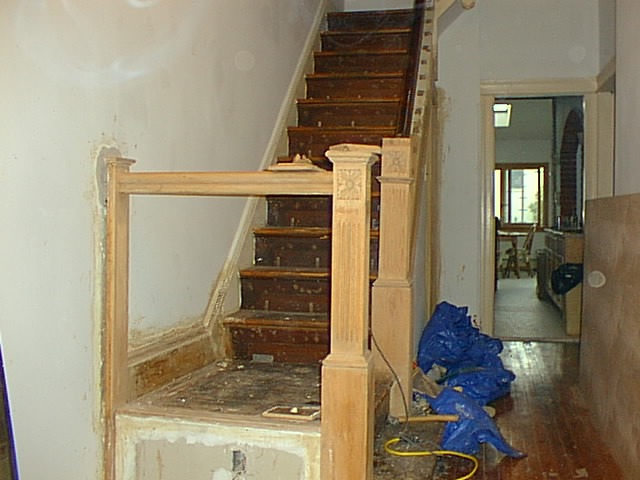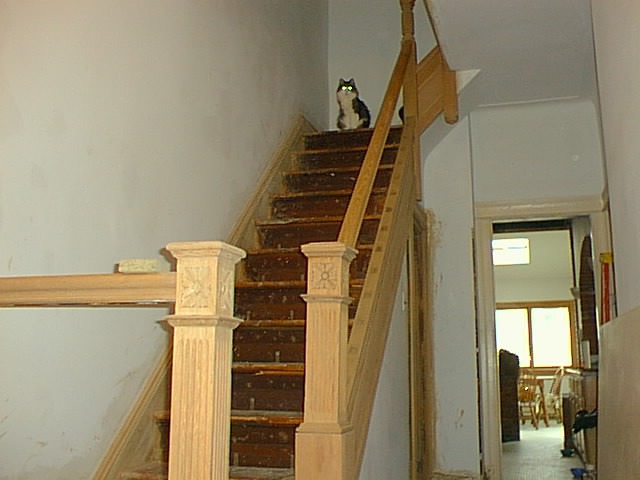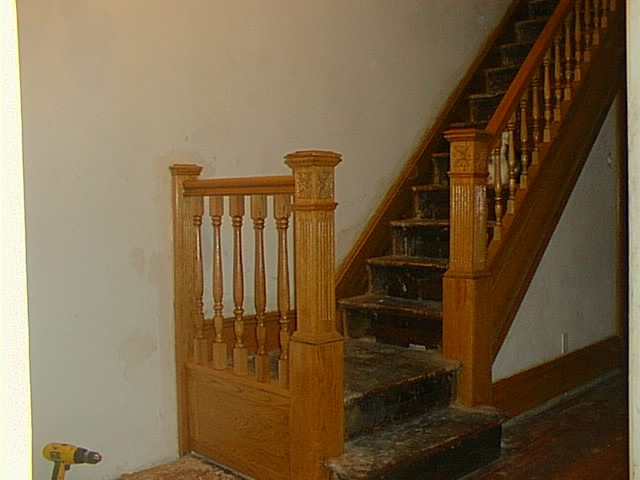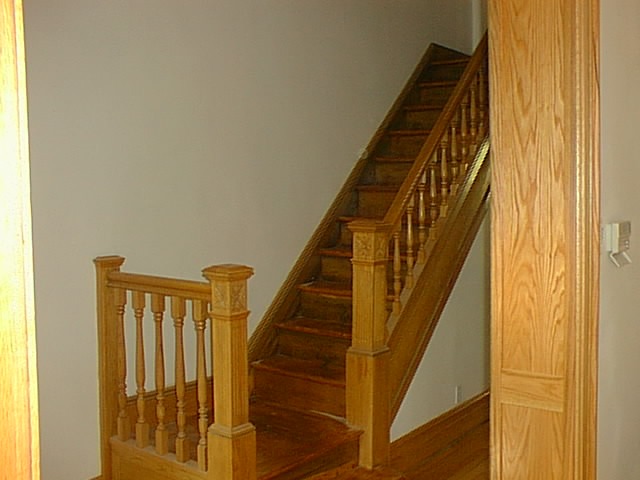The Staircase
When you tackle a home renovation project you’ll inevitably question the taste and common sense of the previous owners. This is one example. It’s a hundred year-old, carved red oak staircase obliterated by cheap paint. Something like this would cost at least ten thousand bucks to build from scratch today and it would still lack the same wood quality. Then again, I’ve never understood why anyone would prefer paint to natural hardwood.
Whoever first laid paintbrush to the staircase didn’t even bother to prime it. That was actually good news for me. It was one less layer to remove.
Stripping is one of my least favorite projects, which is why I hired a friend around the corner, Joyce Laraviere, to do most of it for me. Fortunately, as she got into the job, there were lots of opportunities for me to do what I enjoy. In the end, I wound up replacing almost half the woodwork because it had been so badly damaged by paint and general lack of care.
Let's get to work...
After Joyce began stripping the paint, I began dismantling the stairs. I decided to have new balusters turned rather than strip the old ones. A couple of spindles were missing so I would have to get two new ones made anyway. To make sure they all matched I decided to replace them all. As a PS, before I hired Joyce to do the stripping I had a professional give me an estimate for the job. He wanted $20/each to strip those spindles. I found a production carpentry shop in Brooklyn with a duplicating lathe quote me $12 for new ones with exactly the same profile. I wish all my decisions were so easy.
The new balusters are in. I built a red oak panel for the base of the staircase, along with new newel post caps and detail moulding. New baseboard was added to the landing, replacing the poplar that was originally there. Unfortunately, the wall side stringer is also poplar but it’s routed for the stairs. To replace it would mean dismantling the stairs entirely and I’m afraid this old woodwork wouldn’t survive it.
The treads, risers and landings are pine and poplar but I intend to paint the risers and carpet the treads anyway. The color is a little off in this picture because of the flash. With the exception of the wall-side riser, which is poplar and was impossible to get stained to look like natural oak, it all matches.





